How the giddha folk dance and boliyan songs are helping Punjabi-Canadian women connect with their roots
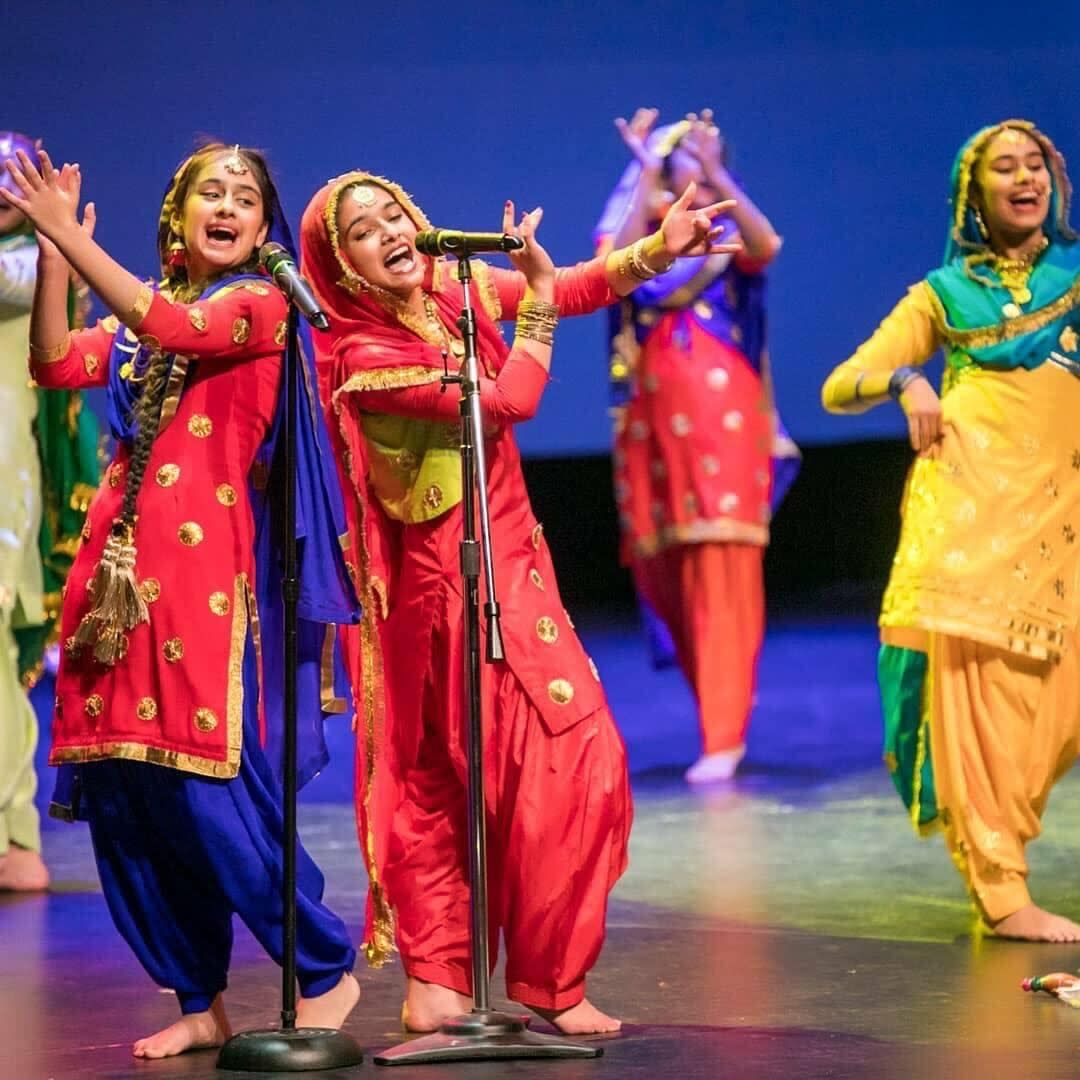
Editor's note: The interviews used for this story were conducted in May 2022.
The moment you step into Shan-E-Punjab Arts Club in Surrey, B.C., it feels like you've stepped into a whirlpool of sound and colour.
Dozens of young women dressed to the nines in traditional salwar-kameez, donning golden pieces of old-fashioned jewellery, clap rhythmically and sing melodious poems while laughing.
Jasmine Kaur Sidhu, a coach at the club, is leading a group practising giddha — the folk dance of Punjabi women from India and Pakistan — and sing boliyan, its accompanying songs and poems.
Sidhu, who was a giddha student at the club before she became a coach, says the dance and verse helped her get a better insight into the Punjabi language without having to go to a formal language class.
"I learned so many new words. I learned more about my culture because of it. I've changed as a person," said Sidhu, who adds that learning giddha and boliyan has brought her closer to her extended family.
"There's so many boliyan that can be sung about them," she said.
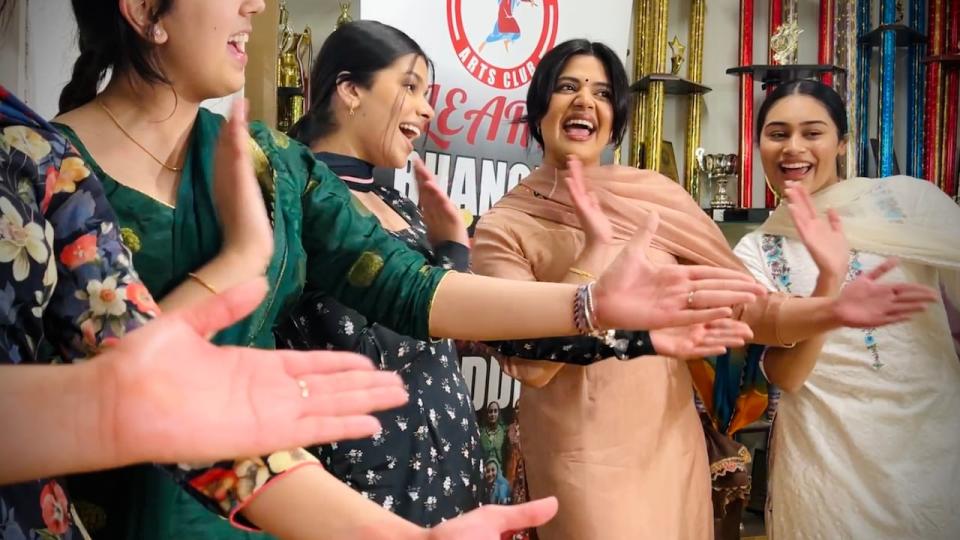
Jasmine Kaur Sidhu (second from right) pictured in 2022. Sidhu was a giddha student at the Shar-E-Punjab Arts Club before she became a coach. Now she is helping others learn the vocabulary and emotions behind giddha and boliyan. (Kiran Singh/CBC)
Sidhu is helping others learn the vocabulary and emotions behind giddha as more Punjabi-Canadian women look to strengthen their identity by reconnecting with their culture and traditions.
"Giddha really helps them make a social connection and have a little group where you can see who you really are," she said.
The use of cultural artifacts — such as pakhi [a decorated handheld fan], peedhi [a traditional stool] and phulkari [an embroidered shawl] — as props is another entertaining way the dance conveys the spirit of Punjabi culture, she says.
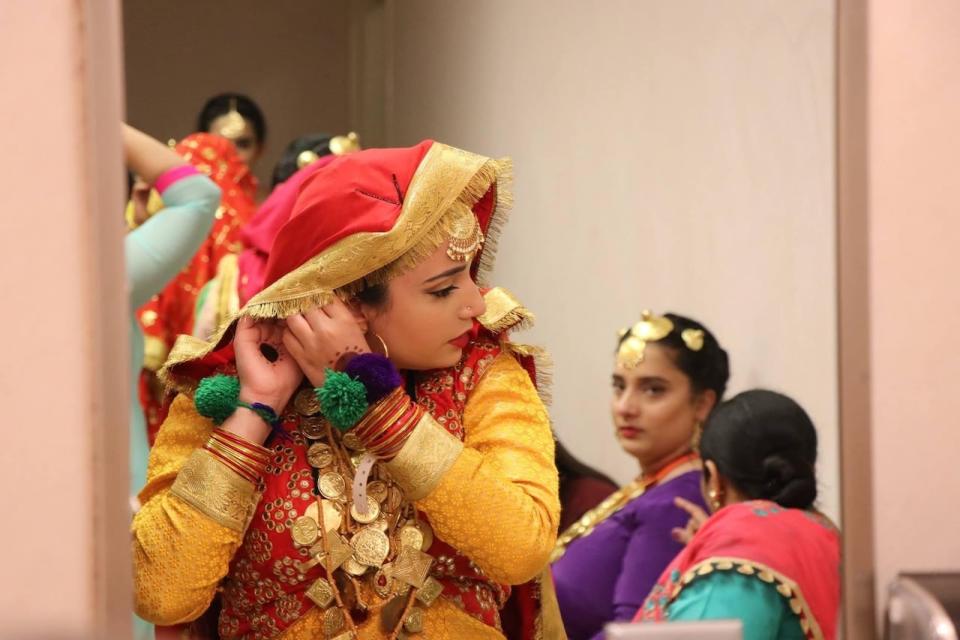
Giddha students at the Shan-E-Punjab Arts Club. Giddha coach Jasmine Kaur Sidhu says the dance has evolved into something that's helping Punjabi-Canadians reclaim their roots and strengthen their identity. (Shan-E-Punjab/Instagram)
A way for women to express themselves
Giddha, which focuses on grace, flexibility and strength, originated as a way for women to celebrate happy occasions.
But with the introduction of boliyan, it transformed into a medium for women to express themselves by, for example, venting their grievances about their in-laws, husbands or careless brothers, or talking about love and romance in a society where they wouldn't normally do so.
"Back in the day, this was a way to take out women's frustrations and kind of a satire of what was going on in their lives," said Sidhu.
Kamaljit Neeru, a legendary Punjabi singer, says while giddha is a place where women can feel completely free, boliyan provides them with a medium with which they can air their concerns and outrage in a satirical way, without worrying about public judgment.
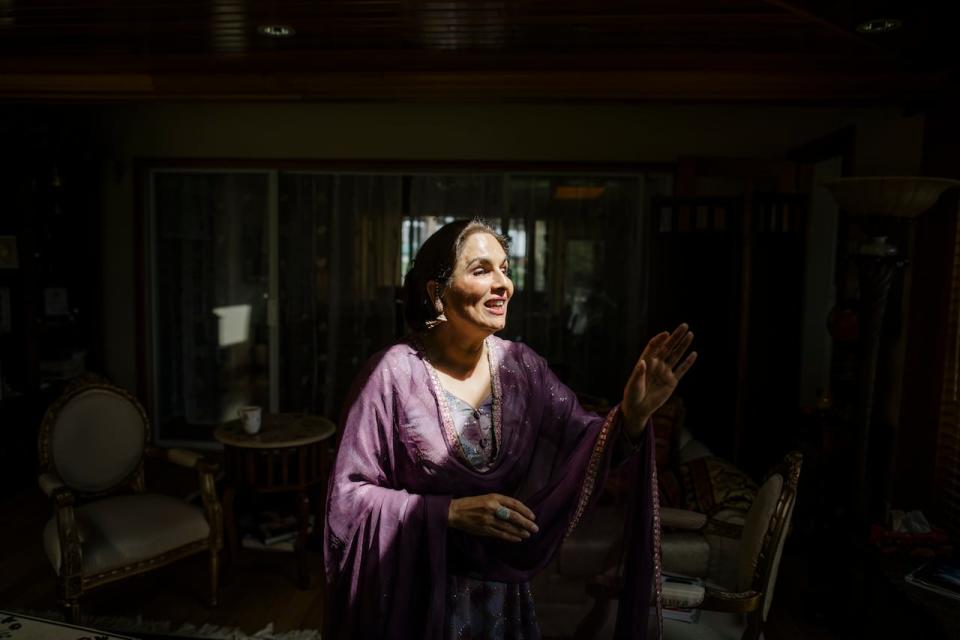
Punjabi singer Kamaljit Neeru, pictured at her home in Surrey in May 2022, says boliyan provided women with a medium in which they could air their concerns and grievances in a satirical way. (Ben Nelms/CBC)
Many boliyan include comments about personal relationships and address specific family members using unique Punjabi words for each relationship.
"In English we have just one word, 'aunty' or 'uncle,' but in Punjabi we have maasi [mother's sister], we have bhua [father's sister], we have daadi [paternal grandmother], we have chaachi [younger paternal aunt], we have maama-maami [mother's brother and his wife]. Every relationship is unique," Neeru said.
Some boliyan are also written as short performances depicting different scenes, such as wedding rituals or family fights, offering insight into the past.
Neeru gives the following example that condenses a complicated scene — about a seasonal festival celebrated by singing and dancing — into just four lines:
ਸਾਉਣ ਦਾ ਮਹੀਨਾ,
ਬਾਗ਼ਾਂ ਵਿੱਚ ਬੋਲਣ ਮੋਰ ਵੇ
ਅਸਾਂ ਨੀ ਸੌਹਰੇ ਜਾਣਾ,
ਗੱਡੀ ਨੂੰ ਖਾਲੀ ਮੋੜ ਵੇ
It's the month of Sawan,
Peacocks are singing in the gardens.
I don't want to go back to my in-laws,
Return with your empty bullock cart.
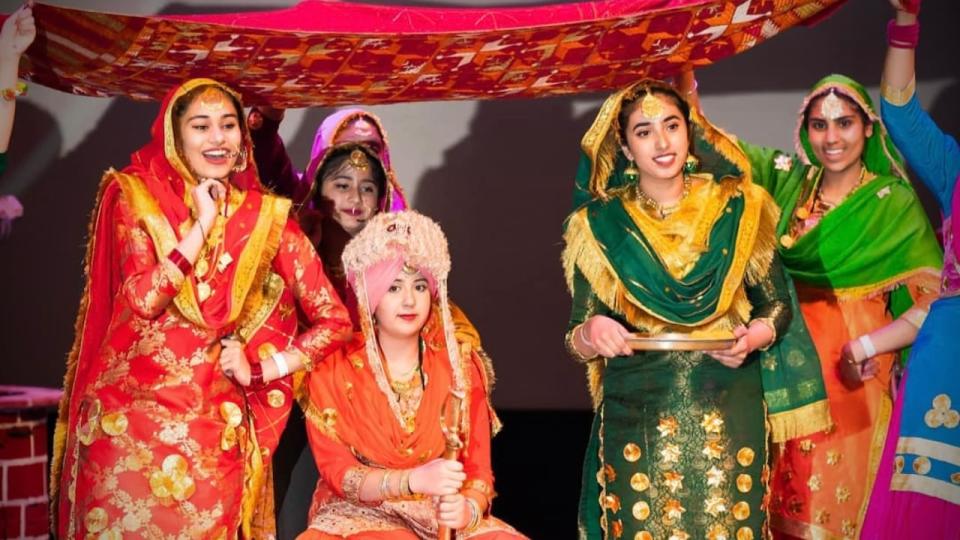
Giddha students at the Shan-E-Punjab Arts Club. (Shan-E-Punjab Arts Club/Instagram)
Preserving the past, reflecting the present
But the traditional dance and verse are also changing with the times.
Sidhu, who says she is seeing a gradual increase in the number of giddha students, says the dance is picking up steam on social media.
Jas Malkeet, who studied giddha and boliyan for her doctoral program at the Punjabi University in Patiala, India, says as human behaviour, relationships and vocabulary change, so does boliyan.
"Many other things that are not related to our old culture, they are in now," said Malkeet.
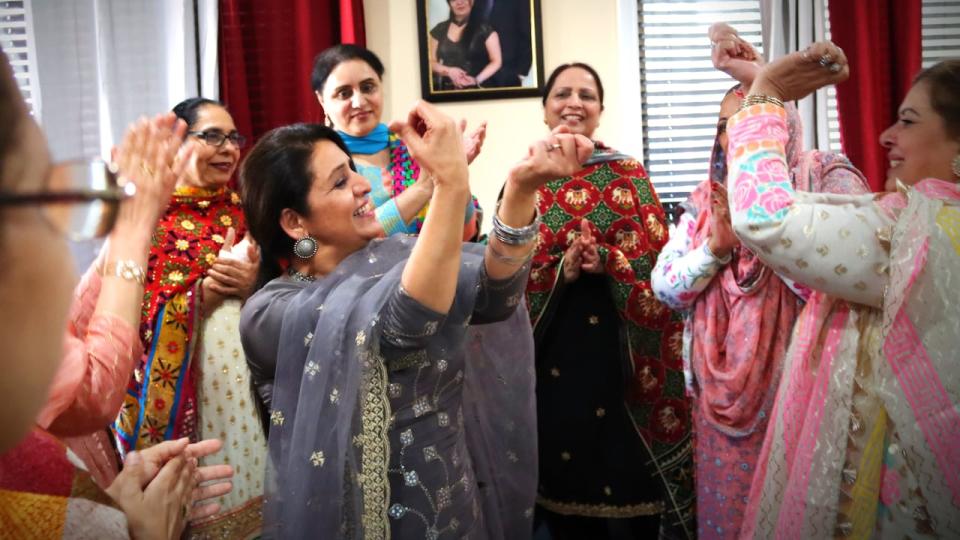
Jas Malkeet (second from left) and her friends performing giddha and singing boliyan at her son's wedding in 2022. (Kiran Singh/CBC)
Specific boliyan about Canadian experiences have been popping up, as well.
"Women go to pick berries, and now berries are added into boliyan," said Malkeet, giving an example of one line:
"ਸੋਹਣੀ ਪੱਗ ਨਾ ਬੰਨ੍ਹ ਵੇ, ਮੈਂ ਤਾਂ ਚੱਲੀ ਆਂ ਤੋੜਨ ਹੁਣ ਬੇਰੀਆਂ" ["Don't wear your turban so nicely today, I'm off to pick berries."]
Neeru says boliyan have always reflected the present, and they should continue to do so.
"We should change ourselves with the times. If we don't, we will be left behind," Neeru said.


